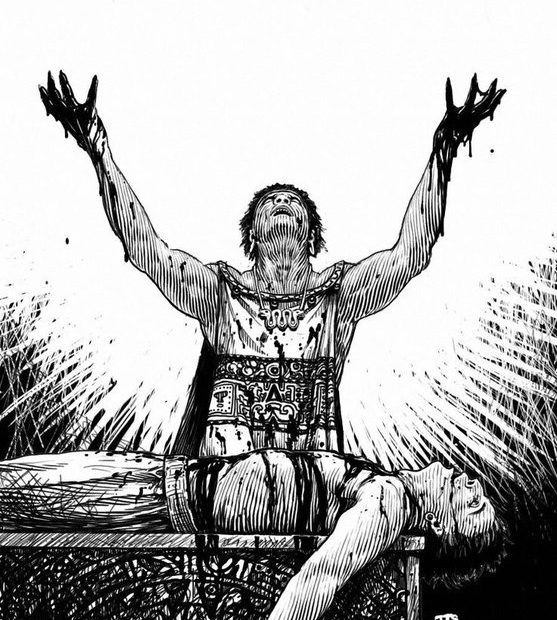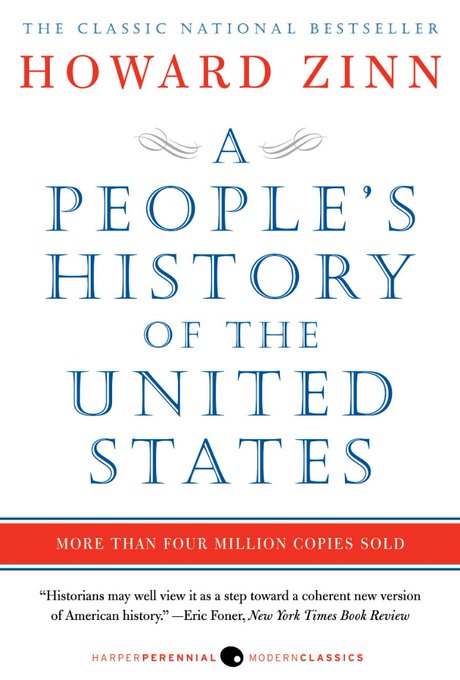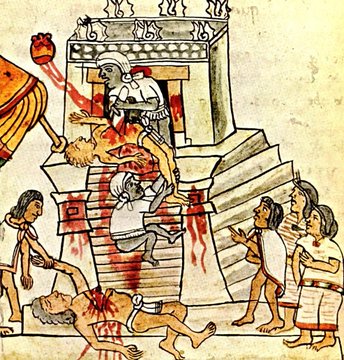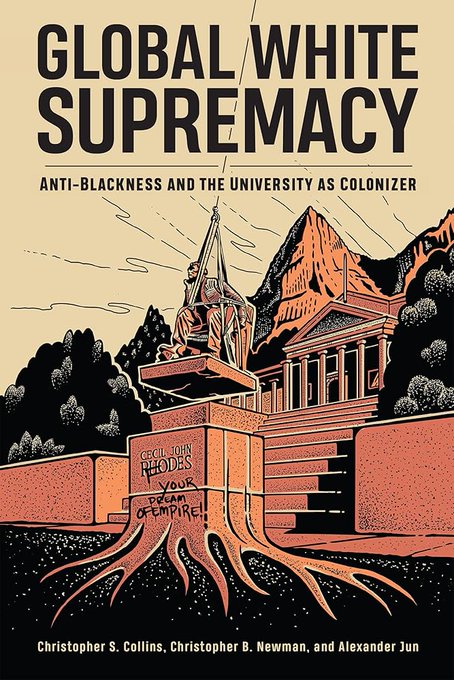
I’ve never done this before, and I promise not to do it often. But I recently read an article I would simply like to share in full. As readers of this blog are surely aware, I often quote from various sources, sometimes at length, to prove a point or provide an authoritative source: after all, if something is said right the first time, why try to say it differently?
But in this case, there was simply nothing for me to add. Nothing to extract. The conclusion is so strong that to dissect or truncate the article supporting it would be a disservice to both the author and the reader. I also think the article is well written, informative, and important. I simply had to share it. In short, it examines how myths and false narratives are being used to erase the true history of White culture.
I’ve quoted from the Council of European Canadians before, and as before, I want to be clear so that there is no misunderstanding: the CEC is not affiliated with this blog or the ANP in any way. Frankly, I would be surprised if they have ever heard of Amerika Erwache. Likewise, the author of the article in question, Mr. Chad Crowley, is not associated with Amerika Erwache or the ANP. He is, however, a very good writer and I recommend perusing his other articles on the CEC website.
Without further ado:

History is a battlefield, and the West is under siege.
- by Chad Crowley, November 18, 2024

Fairytales like the myth of “the noble savage” and the “stolen land” narrative are historically false, weaponized for the purposes of politics and control. Let’s cut through the lies and uncover the reality.
The Myth of the Noble Savage: A Critique of Romanticized History and Politicized Narratives
The Western intellectual tradition has long grappled with the concept of the “noble savage,” a trope symbolizing the supposed purity and moral superiority of pre-civilized peoples living in harmony with nature. This idea, most famously articulated by Jean-Jacques Rousseau, suggests that humanity, uncorrupted by the inequalities of civilization, thrives in a state of idyllic simplicity. However, both historical evidence and anthropological studies decisively refute this idealized vision.
Napoleon Chagnon’s groundbreaking work on the Yanomamö tribe of the Amazon provides a sobering counterpoint. Far from being paragons of peace, the Yanomamö lived in what Chagnon described as a “state of chronic warfare.” Violence permeated their social structures, manifesting in inter-village raids and brutal chest-pounding duels. Chagnon’s research revealed that aggression was not an anomaly but a driver of evolutionary success, with violent men often achieving higher reproductive success through securing more wives and offspring. His findings, though controversial, aligned with fields like sociobiology, which argue that human behaviors—including violence—are deeply intertwined with natural selection. Violence, far from being an external imposition, is endemic to the human condition, shaped by both biological imperatives and cultural contexts.

Despite academic backlash, Chagnon’s work underscores the fragility of the noble savage myth. Romanticized depictions of indigenous peoples often omit the complex, and sometimes harsh, realities of their societies. Rousseau’s vision of innate goodness was a philosophical ideal, an abstraction, and not an anthropological truth.
Politicizing Indigenous Histories: The Stolen Land Narrative
In the modern world, the noble savage myth has been weaponized to promote politicized narratives, chief among them the “stolen land” argument. This narrative asserts that European settlement of the Americas was rooted in genocidal conquest, rendering European-founded nations like the United States inherently illegitimate. Proponents of this view often rely on works
like Howard Zinn’s “A People’s History of the United States,” which advances a Marxist interpretation of history as a binary conflict between oppressors and oppressed.
Zinn’s “A People’s History” portrays European colonization as a singularly destructive force, a theme echoed by figures such as Ward Churchill and Charles C. Mann. Churchill frames European settlers as architects of systematic genocide, while Mann’s “1491” and related works suggest that pre-Columbian populations in the Americas may have reached as high as 100 million. Such inflated figures allow Mann to characterize the demographic collapse caused by disease as deliberate genocide rather than an unintentional consequence of contact between isolated populations.

However, these arguments falter under scrutiny. Claims of pre-Columbian populations reaching 100 million are speculative at best, unsupported by concrete evidence such as censuses, infrastructure, or the ecological carrying capacity needed to sustain such numbers. While it is true that diseases introduced by Europeans devastated indigenous populations, attributing this devastation to deliberate intent ignores the reality of unintentional pandemics in a pre-modern world.
Furthermore, the narrative of systematic genocide is complicated by historical realities of intermarriage and ethnocultural exchange. Well-known historical figures such as Hernán Cortés, who had children with indigenous women like La Malinche, exemplify the intertwined relationships between Europeans and indigenous peoples. These complex interactions reflect a more nuanced history that resists simplistic depictions of European colonization as wholly exploitative or genocidal.
Indigenous Societies and Reality
Contrary to the idyllic portrayal often promoted in modern discourse, the majority of pre-contact indigenous societies exhibited practices and social structures directly antithetical to this romanticized fairytale. Slavery was not only present but deeply entrenched in various indigenous cultures. The Aztecs, for instance, built their empire on a foundation of subjugation, extracting tributes from conquered tribes and practicing large-scale human sacrifice, with tens of thousands reportedly killed during specific ceremonies. Similarly, the Iroquois Confederacy, while celebrated for its governance, carried out campaigns of extermination against rival tribes, such as the Huron, whom they nearly annihilated.

The false narrative of indigenous harmony with nature also falters under scrutiny. The claim that Native Americans used “every part of the buffalo” is contradicted by archaeological findings of wasteful hunting practices, including entire herds driven off cliffs with much of the meat left unused. Moreover, the extinction of North American megafauna, such as mammoths and giant sloths, coincided with the arrival of human populations across the Bering Land Bridge. This mass extinction event strongly suggests that overhunting played a significant role, further dispelling the myth of a prelapsarian balance with nature.
Land, Trade, and the Reality of European-Indigenous Relations
The arrival of Europeans in the Americas, and elsewhere, completely transformed the indigenous world. The trade of European goods such as firearms, metal tools, and textiles provided opportunities that many indigenous groups leveraged to their advantage, often acting to forever reshape their social and political structures. One famous example is the Dutch purchase of Manhattan Island for goods worth 60 guilders—often interpreted as an exploitative transaction. However, this interpretation overlooks the indigenous perspective, in which land was not viewed as a commodity with permanent ownership. To the local Lenape, the goods they received were more immediately valuable than the land they nominally “sold.”
By the time English settlers began establishing colonies in the 16th century AD, the demographic landscape had already shifted due to European-introduced diseases that decimated indigenous populations, often wiping out 70–90% of certain groups. English colonization frequently occurred in regions rendered sparsely populated by these plagues, leading to a complex mixture of trade, treaties, and conflict between settlers and the relatively few remaining indigenous peoples. The oversimplified “stolen land” narrative disregards this nuanced reality, which often involved negotiated agreements, mutual benefits, and, inevitably, power struggles.
The Weaponization of History
In the modern era, myths like the “noble savage” and the “stolen land” narrative have been weaponized to undermine Western civilization and its people. These selective distortions portray European expansion as an unprecedented act of evil while ignoring the universal history of conquest, displacement, and cultural assimilation that defines all human societies. This calculated framing serves to isolate Western nations as uniquely culpable, denying the context of global historical patterns. Everything from slavery to income inequality in the present-day world is presented as a uniquely Western invention.

Institutions, ironically born from Western achievements—universities, transglobal organizations, and mass media—actively propagate these narratives, often at the deliberate expense of truth. They romanticize indigenous societies while downplaying or outright ignoring the violence, exploitation, and the bloody internecine struggles that characterized them. By doing so, these institutions obscure the immense contributions of European peoples, including the global abolition of slavery, the codification of universal human rights, and the scientific and industrial revolutions that transformed the modern world.
Defending Western Civilization
The campaign to distort history and propagate false narratives like the “stolen land” myth is an ideological assault aimed at delegitimizing European peoples and their civilizations on a global scale. It is not merely an attack on the past but a calculated effort to demoralize and undermine the identity and cohesion of European populations worldwide. A demoralized people, disconnected from their heritage and accomplishments, are far easier to manipulate and control.
This campaign also serves to rationalize and normalize the profound demographic shifts currently occurring within the Western world. By erasing or distorting European achievements and framing their history as uniquely oppressive, these specious and politically motivated narratives facilitate a broader agenda to dilute the ethnocultural and historical foundations of the West. This is not a mere cultural critique but a war of attrition against the legacy and future of European civilization.
These distortions are not confined to academic circles but are amplified through global institutions, mass media, and the education system. The ultimate goal is to replace pride and confidence in European achievements with guilt and self-doubt, leaving its nations and peoples vulnerable to external manipulation. If Western nations succumb to this demoralization, they risk both ethnocultural erasure and civilizational extinction. To resist this deliberate campaign of erasure, all European peoples and the broader Western world must reject these corrosive narratives and reclaim their history in all its glory. Western civilization is the bedrock of human progress, and its achievements—from the rule of law to the foundations of science—are legacies worth defending. It’s time we stand firm in this conviction and defend what is ours.


Couldn’t have said it better myself.
Amerika Erwache!



Leave a Reply